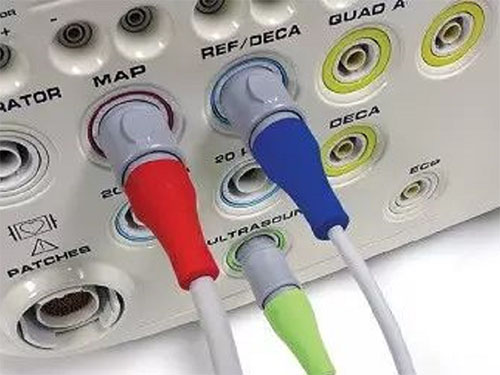How to choose the right connector for medical equipment
The design of medical devices is highly dependent on efficient underlying electronic interconnection systems. Therefore, connector design and the selection of the right connector are critical.
When designing medical devices, engineers face many challenges and extremely complex choices that would not occur in other industries. Medical devices need to be durable and reliable, and the operating conditions are often very harsh, including factors such as liquids, sterilization, physical interference and electromagnetic interference, and extremely high plug-in and unplug cycles.
These types of medical devices are highly dependent on the effectiveness of the underlying electronic interconnection system. Connector design is an integral part of the design process, and choosing the right connector is critical.
The first factor engineers consider is deciding whether to use an off-the-shelf connector, a hybrid version, or a custom solution. Off-the-shelf connector products are already available in the market and are available in a variety of configurations. These products tend to require lower engineering and tooling investments, but have longer lead times and higher unit costs. Hybrid versions offer customized overmolded features on existing connectors. These products improve performance and aesthetics over off-the-shelf products, and have lower design and engineering costs than fully customized connectors, but have longer lead times. Custom solutions are products designed and manufactured for a specific customer, device, or application. Using a customized connector makes it easier to integrate components or electronic components, as well as add marking or logos. The initial investment in engineering and tooling is generally higher, but, depending on production volume, these solutions can be more cost-effective in the long run.

In many cases, a customized or hybrid solution is preferred over an off-the-shelf solution, especially when there are special considerations.
For example, in a procedure room where dozens or more different cables and connectors are used at the same time, medical personnel are at risk of misconnecting cables and devices. Off-the-shelf connectors can be equipped with different colored overmolded shells. This hybrid product can clearly mark which connector is connected to which device.
Devices used on patients often need to withstand defibrillation pulses of 5,000 to 8,000 volts when the patient's heart stops beating. In this case, insulation, spacing, materials and air gaps can all be customized to meet the specific needs of the application.
Other examples of customized solutions include designing connectors to prevent incompatibility during insertion. Or, considering ergonomics, the ideal medical interconnect system should be large enough to be easily handled by the intended user and can be inserted intuitively.
For hybrid or customized medical connectors, the design, mold and manufacturing process generally takes four to eight months. Early in the design process, the team must clearly define the requirements, which involve electrical (voltage, cardiac shock, bandwidth/data rate, etc.), mechanical (cable diameter, ergonomic characteristics, expected bending life, expected insertion force and extraction force, etc.) and environmental (sealing and intrusion protection, cleaning, disinfection, etc.) and other aspects.
Once the specifications have been finalized and the design work has been agreed upon (including a mock-up), prototyping can begin.
When selecting a hybrid or custom medical connector, teamwork between all parties involved is essential to produce a medical device that performs well in the field and meets all mechanical and electrical requirements, including the connector and cable assembly.
